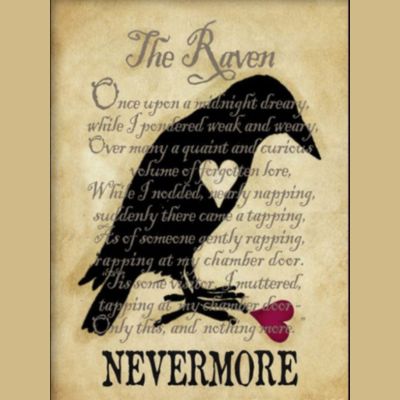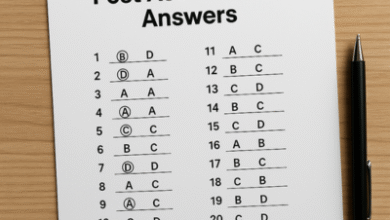“The Raven” Poem: Meaning, Form and Enduring Power

by Edgar Allan Poe
When The Raven was first published on January 29, 1845, it immediately struck a chord. This haunting narrative poem by Edgar Allan Poe remains one of the most famous works in American literature—its refrain “Nevermore” still echoing in culture and classroom alike. In this article, we’ll explore the poem’s background, structure, narrative, symbols, major themes, and why after nearly two centuries it continues to hold our imaginations.
Background & Publication
Poe published The Raven in the New York Evening Mirror on January 29, 1845. It propelled him to national recognition almost overnight. Its immediate popularity underscored how Poe combined the melancholic with the musical to powerful effect.
The poem reflects many of Poe’s own obsessions and experiences: loss, grief, the possibility of the supernatural, and the boundary between sanity and madness.
Poe himself claimed, in his essay The Philosophy of Composition, to have written the poem in a highly deliberate way—deciding first the effect he wanted, then the rhythm, then the refrain. The result: a poem where sound and meaning work in tandem.
Narrative & Summary
The poem opens: “Once upon a midnight dreary, while I pondered, weak and weary…” Immediately we enter a speaker’s dark December midnight, where he grieves for his lost love, Lenore.
He is interrupted by a “tapping,” which he at first dismisses, then opens the door to find nothing but darkness. Soon a raven enters—an ominous, black bird—which perches on the bust of Pallas (Athena) above his chamber door.
The speaker addresses the raven, asking it questions: Will he be reunited with Lenore? Will he ever escape his grief? The raven answers—always—with one word: “Nevermore.”
As the poem progresses, the speaker’s hope dissolves. The raven’s repetition becomes a ritual of despair. In the final stanza, he realizes the raven will be “still is sitting” and his soul “shall be lifted—nevermore!” He ends stranded in the shadow of the bird and of his grief.
Form, Sound & Structure
Form & Meter
The poem is organized into eighteen six-line stanzas (sestets). The dominant meter is trochaic octameter (eight trochees per line), though Poe uses variations and catalexis (dropping one syllable) to create rhythmic tension.
Rhyme & Internal Sound
The rhyme scheme of each stanza is A B C B B B: the last three lines match the same B-rhyme. One of those rhyming words is often “—ore” (door, Lenore, more, shore), linking to the poem’s preoccupation with “nevermore.”
Poe also uses internal rhyme and alliteration (“silken, sad, uncertain rustling”) to build a musical, eerie atmosphere.
Why it matters
The insistence of rhyme and repetition traps the reader in the poem’s mood of obsession and grief. The sound forces the poem’s meaning—a mind stuck in its own reflection—to the surface.
Major Themes & Symbols
Grief, Loss & Remembrance
The speaker’s loss of Lenore drives the poem. He tries to distract himself with reading, but the tapping and the raven force him to confront what he cannot forget. The raven itself becomes a symbol of that never-ending remembrance—Poe described it as a symbol of “mournful and never-ending remembrance.”
Reason vs. Madness
The bust of Pallas (Greek goddess of wisdom) over which the raven perches signals the tension between rational thought and irrational despair. At the poem’s start, the speaker is reading—tranquil, reasonable. By the end, he is consumed by the raven’s single-word “Nevermore.”
The intrusion of the raven—and its seeming ability to speak—raises the question: is this supernatural, hallucination, or metaphor? The raven may represent the narrator’s subconscious despair.
Fate, the Afterlife & the Unknowable
In asking the raven whether he shall see Lenore “in the … Heaven,” the speaker confronts his hope (or fear) of an afterlife. The raven’s “Nevermore” suggests there is no more—that the speaker’s fate is sealed. Memory, death, and what comes after—these are central to the poem.
Obsession & Circularity
The poem’s form reflects the speaker’s circular descent: each stanza, each question, returns to the same refrain. The repetition locks him in the same grief. In the end, the narrator is left reeling, struggling with the idea that maybe now is the time to finally begin to live again—but unable to.
Sound as Meaning
Because Poe builds so strongly on sound—meter, rhyme, alliteration—the poem asks more than to be read: it asks to be heard. The repetition of “Nevermore” becomes both leitmotif and prison. The poem’s lament is in its music as much as its words.
Imagery & Key Lines
- “Once upon a midnight dreary, while I pondered, weak and weary…” sets the tone of exhausted mourning.
- “Deep into that darkness peering, long I stood there wondering, fearing, / Doubting, dreaming dreams no mortal ever dared to dream before…” underscores the psychological journey into fear and fantasy.
- The raven is described as “grim, ungainly, ghastly, gaunt and ominous bird of yore.” Its arrival is “with many a flirt and flutter … in there stepped a stately Raven of the saintly days of yore.”
- The final lines: “And the Raven, never flitting, still is sitting, still is sitting / On the pallid bust of Pallas just above my chamber door; / And his eyes have all the seeming of a demon’s that is dreaming, / And the lamp-light o’er him streaming throws his shadow on the floor; / And my soul from out that shadow that lies floating on the floor / Shall be lifted—nevermore!” illustrate the ultimate entrapment.
Why It Endures
There are many reasons The Raven remains taught, quoted, and referenced:
- Its musicality makes it memorable. The “Nevermore” refrain is iconic.
- Its themes are universal: loss, memory, despair, the question of what happens after death.
- The poem lives in our culture: it has been referenced in film, music, television, and countless parodies.
- Because it sits at the boundary of the real and the supernatural—it shows how grief itself can become haunting.
- It exemplifies Poe’s ability to craft atmosphere: a midnight chamber, a tapping, a raven, a mind unraveling.
Teaching & Modern Reading
For students and modern readers, The Raven offers multiple entry points. One might focus on sound—how internal rhyme and repetition build tension. Another might look at symbolism—why a raven? Why December midnight? Why a bust of Pallas?
Another lens is psychological: the raven might be the speaker’s own unconscious, answering the questions he asks but also the questions he won’t ask.
For readers and writers today, the poem remains a masterclass in how form and sound can create mood and meaning.
Final Reflection
The Raven offers no neat consolation. There is no reunion with Lenore. The raven speaks “Nevermore.” The speaker is left in his shadow. But in that uncompromising bleakness lies its power: grief need not end, memory can dominate, rational thought can be upended. The poem invites us to stare into the darkness, to hear its tapping, and to confront what we might whisper in the night.
For readers of today, it is a reminder that the darkest nights of our psyche may come not from external monsters, but from the raven within—our refusal to release the past, our fear of moving on, our obsession with what has been lost.
In short, The Raven is not merely a poem about a bird or a man—it is a poem about the haunting power of memory, sound, and silence. And if, in that midnight chamber, you pause and listen for the tapping… you may know what the speaker knows: the raven still sits, and his soul shall be lifted—nevermore.
Thank you for reading. This article appears on Newsta.
1. Who wrote The Raven poem?
The Raven was written by Edgar Allan Poe, one of America’s most celebrated Gothic writers. It was first published in 1845, bringing Poe instant fame for its haunting rhythm and unforgettable refrain, “Nevermore.”
2. What is The Raven poem about?
The poem tells the story of a grieving man who is visited by a mysterious raven on a dark December night. As he questions the bird about his lost love, Lenore, the raven answers only “Nevermore,” driving the man into despair and madness.
3. What is the main theme of The Raven?
The main themes include grief, loss, memory, and the descent into madness. The poem explores how sorrow can consume the human mind and how the longing for the past can turn into obsession.
4. What does the raven symbolize?
The raven symbolizes death, mourning, and the permanence of loss. It can also represent the narrator’s own mind—dark, unrelenting, and filled with memories that refuse to fade.
5. Who is Lenore in The Raven?
Lenore is the lost love of the narrator. Though never fully described, she represents beauty, purity, and the perfection of something that is gone forever. Her absence drives the emotional core of the poem.
6. Why does the raven say “Nevermore”?
“Nevermore” serves as both a literal and symbolic refrain. It emphasizes the finality of death, the futility of seeking answers, and the narrator’s inability to move beyond grief. The repetition traps the speaker—and the reader—in despair.
7. What is the tone of The Raven?
The tone is melancholic, eerie, and tragic. Poe crafts a musical rhythm that mirrors the speaker’s descent from curiosity to hopelessness. The atmosphere grows darker with each stanza.
8. What is the rhyme scheme and meter of The Raven?
The poem uses the rhyme scheme ABCBBB and is primarily written in trochaic octameter—a rhythm of eight stressed and unstressed pairs. The heavy use of internal rhyme and repetition adds to the hypnotic, haunting quality.
9. Why is The Raven still famous today?
It endures because of its musical language, emotional depth, and universal themes of love and loss. Its dark imagery and rhythm have influenced literature, music, and pop culture for generations.
10. What message does The Raven give readers?
The poem suggests that grief and memory can become prisons when we cannot let go of the past. It is a meditation on how the human heart clings to what is lost—and how such clinging can lead to despair.



